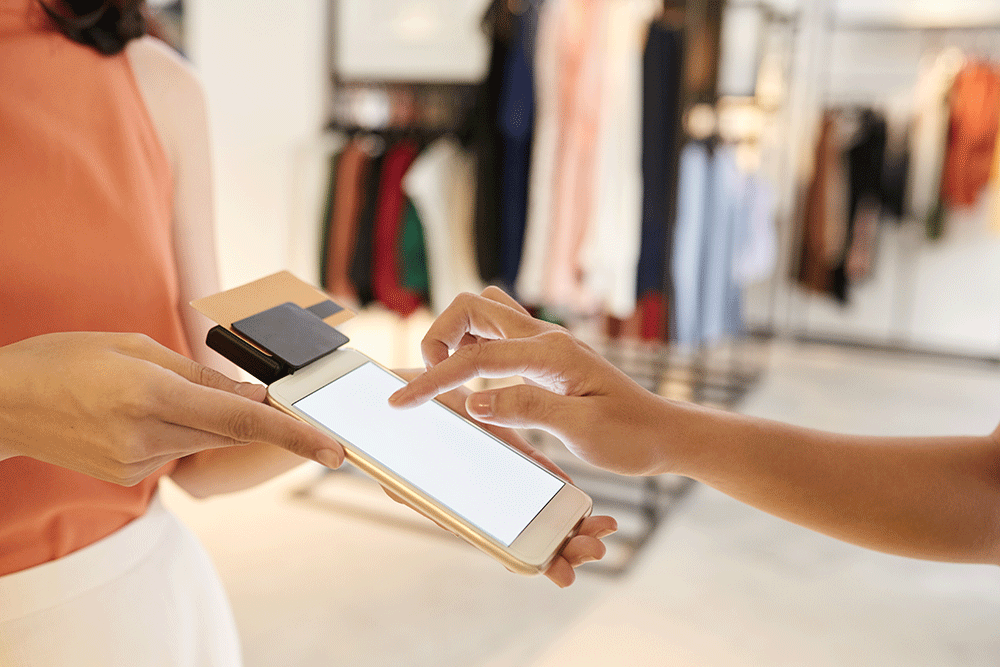A brief history of mobile POS

For as long as there have been shopfronts there have been managers counting the beans, watching the takings and looking for more effective ways to handle their cash. But it’s only been the past 150 years that we’ve come to rely on technology to help us with the task.
There was the creation of the register, the employment of the computer, and now the increasing popularity of the mobile device.
So, how did we get to here, to a mobile Point of Sale system that goes anywhere at any time, and is accessible no matter where you are?
This is the story of mobile Point of Sale and how the cash register went from “Incorruptible Cashier” to store management in the Cloud…
The incorruptible cashier
Cash handling and store management was pretty much a manual affair until in 1879 when an entrepreneurial American took matters into his own hands. James Ritty was a successful purveyor of fine whiskeys and cigars, but had a persistent and perplexing problem; he was getting duped by his staff.
In answer to his woes, he created the Incorruptible Cashier – an entirely manual machine which became the first incarnation of the cash register.
Let’s add some spark
As electricity rolled out during the Industrial revolution, cash registers were a natural mechanism to employ its new age means.
The first cash register with an electrically powered motor was invented in 1906, making it easier for cashiers to ring up and keep tabs on sales.
Computerised cunning
Today’s point of sale systems undoubtedly owe much of their existence to the mainstream rollout of computing, and the 1970s was the era when the changes began to be felt.
It was this decade when computerised registers became commonplace, along with standard features like credit card terminals.
The 1980s and 90s saw further additions like barcode scanners and the increasing integration of all technology into one.
By the early 2000s the features of Point of Sale systems we recognise today were becoming commonplace. Multiple registers could be networked into a singular system that also offered management insight like sales reporting and inventory tracking.
Mobility beckons
As smartphones and tablets took a hold after 2010 it was only a matter of time before the convenience and ease of access would be applied to store management tasks, but first the issue of where to store data would need to be solved.
In the early 2000s, Wi-Fi internet enabled POS systems to be easily networked via wireless means, allowing simple tasks to be performed remotely. Receipts could be wirelessly sent to printers, dockets to kitchens, information to a central computer for storage and access. All this could be emailed to the accountant for swift reconciliation, wage payment and more.
Meanwhile payment processing was also undergoing a revolution with the age of e-commerce. People could make payments via an increasing variety of means including card, cash or even digital wallet housed in their mobile phone.
Onwards and upwards into the Cloud
While the internet offered convenience for Point of Sale, the Cloud and an increase in the proliferation of mobile devices were the two major innovations that allowed POS to truly go mobile.
Suddenly data could be generated on the go, but centralised and accessed from anywhere in the world.
This had benefits for the sales associate and store manager alike. The register could now go anywhere in-store, taking payments, accessing information and relaying it directly to the Cloud for storage and reporting. Meanwhile managers could log in, check inventory, assess sales reports, and input stock when required.
A bevy of mobile POS providers sprung up, offering complete mobile POS software that was as simple to acquire as installing an app, and it was cheaper to set up than ever before. All that was required was software, a suitable tablet and associated hardware like receipt printers, barcode scanners and tablet stands.
The mobile POS industry today
In 2017, mobile POS is a massive tech sector, growing at an astounding rate. Business Insider predicts the number of installed mPOS systems will grow from 8.5 million in 2017 to 22.7 million in 2021.
It is spurred on partly by convenience but also by consumer demand, with Business Insider noting: “Now that consumers expect cards to be accepted everywhere they shop, demand for the devices is as high as ever”.
But consumers aren’t the only ones enjoying the innovation. Capterra compiled an interesting set of statistic that highlight the benefits of mPOS.
- 48% of retail workers prefer using mPOS.
- 62% of retail workers say mPOS has made their jobs easier.
- 28% of retail workers that mobile POS has increased the number of products a customer buys.
- 32% of businesses using mPOS only use mPOS.
- 51% of stores using mPOS accept mobile payments. In a few years it will be 79%.
- 34% of sales happen at a traditional register, 29% happen at a mobile register.
- 43% of stores using mobile POS have downsized cash wraps.
Where to from here?
Business Insider further predicts the future will see mPOS firms “recalibrate their strategies”.
“They’re increasingly targeting small retailers, moving beyond the individual sellers that spurred their initial growth. They’re also turning to value-added services, like working capital programs, business management tools and software, data services, or e-commerce integration, to make money.”
The final word
Whatever the future may hold, mPOS offers a retail convenience far removed from the cumbersome “Incorruptible Cashier” of old. By and large much of this innovation has occurred in only the past 50 years, and it has accelerated rapidly since the turn of the millennium.
Where it will head in the next 20 years remains to be seen, but without doubt it will be convenient, consumer driven and quite possibly cashless.